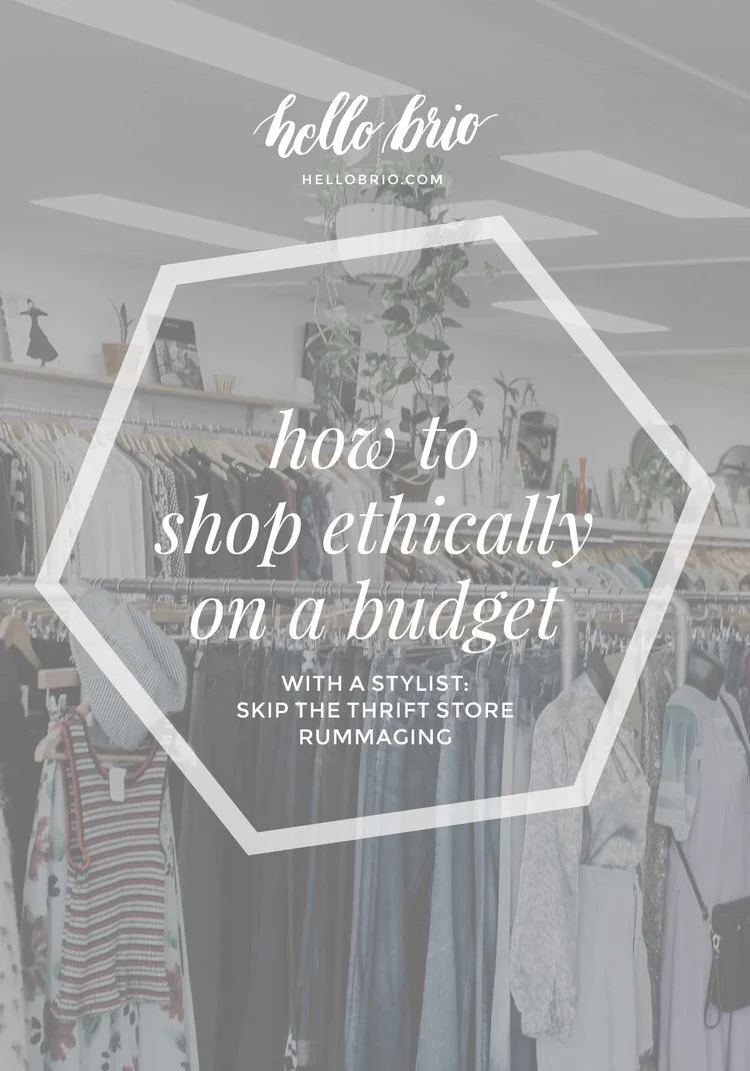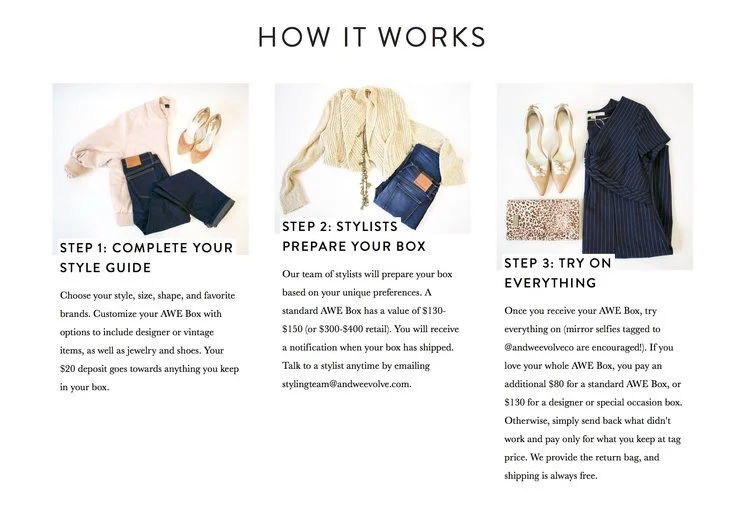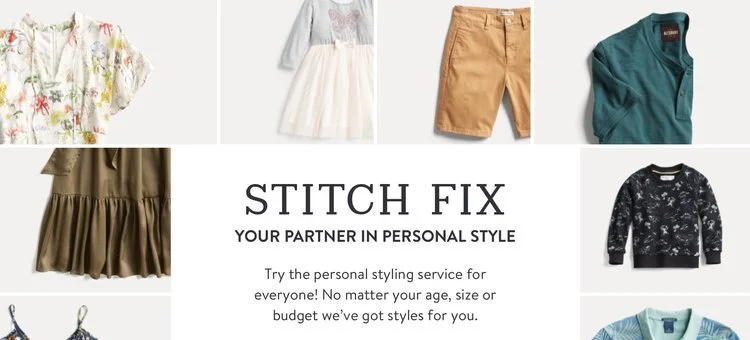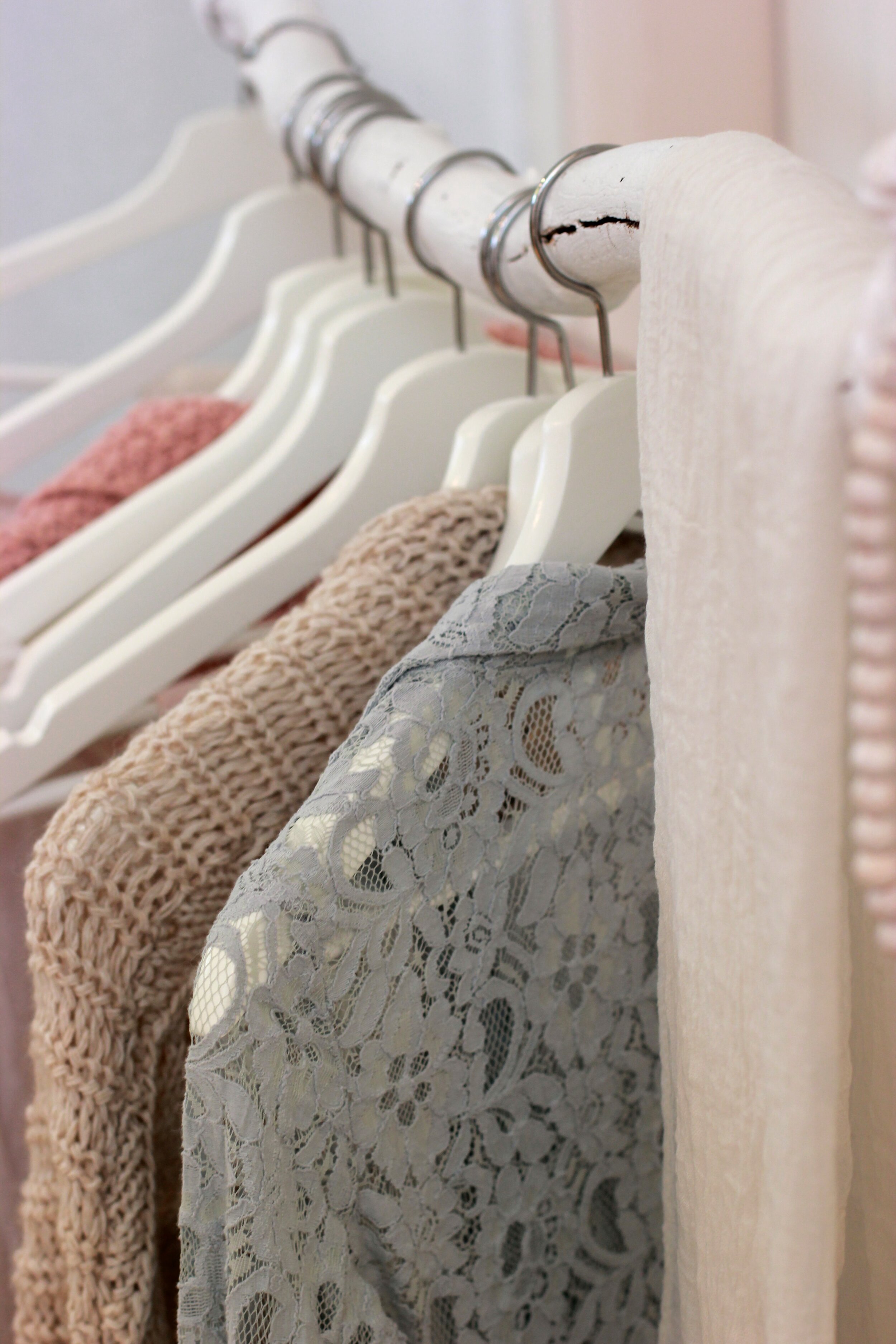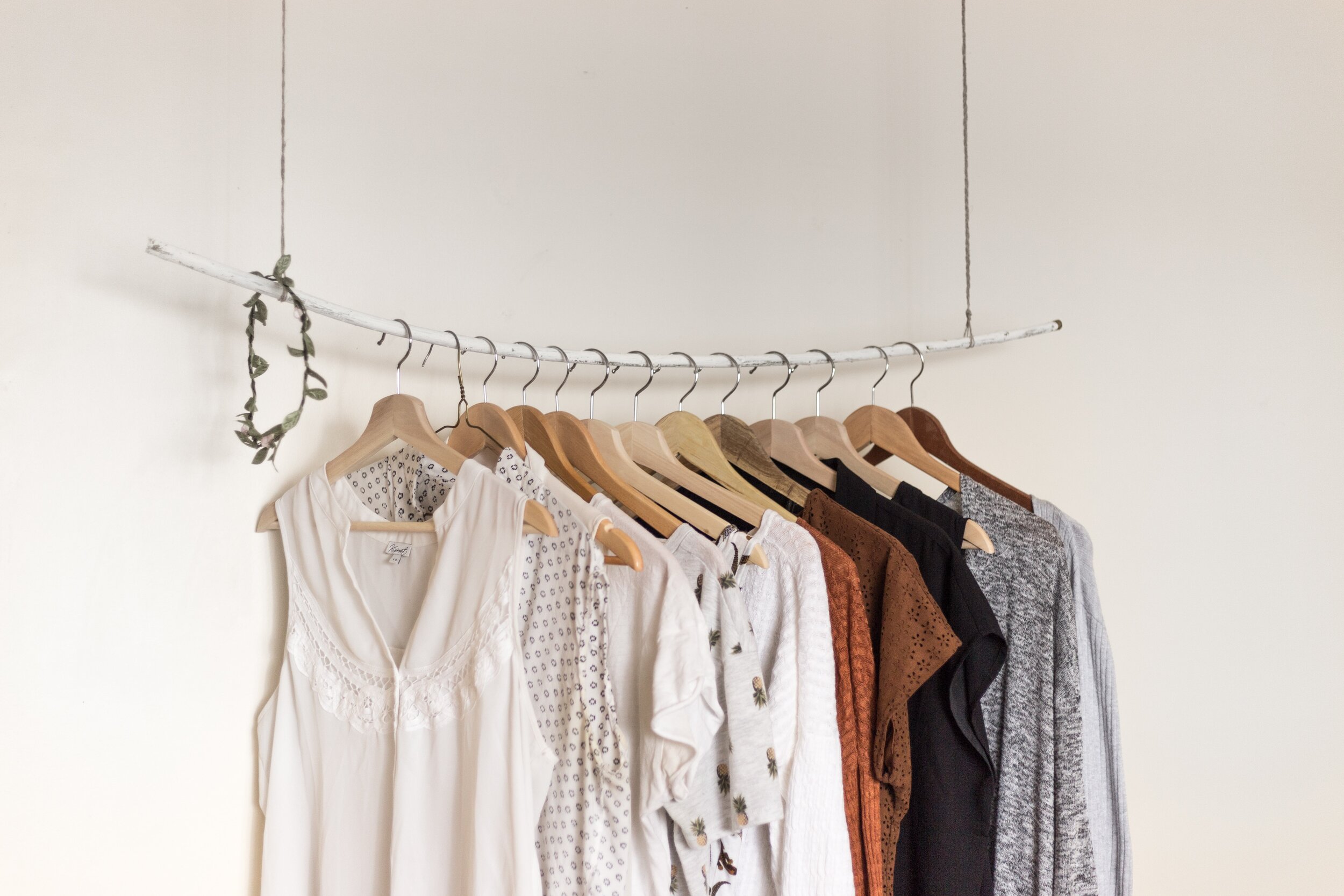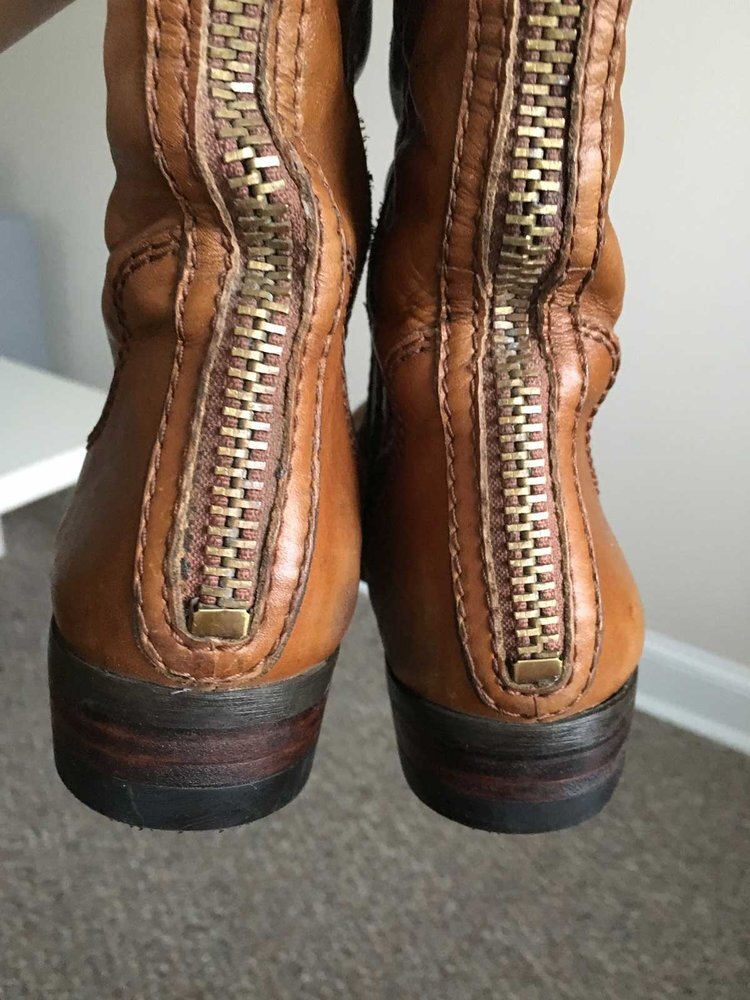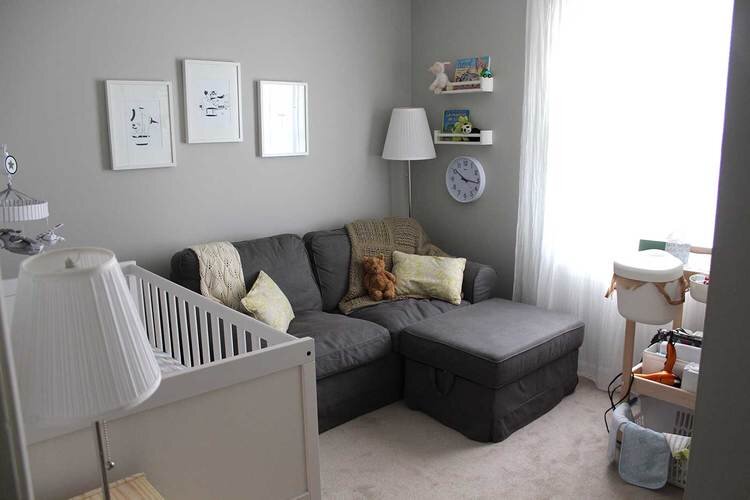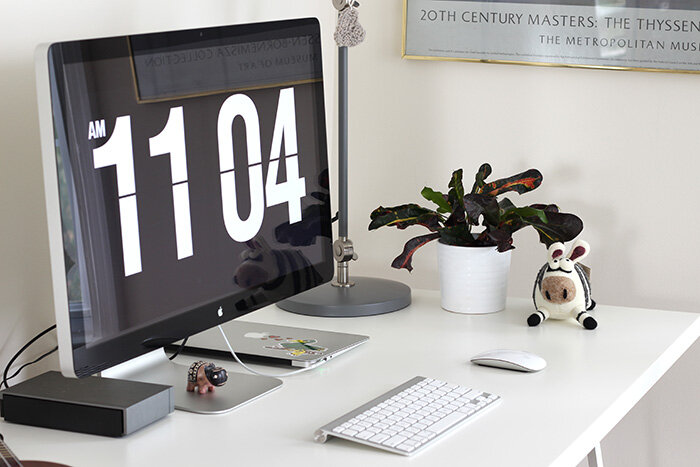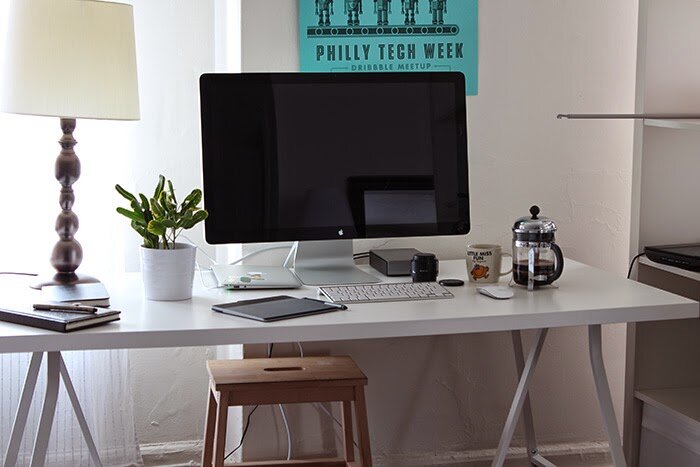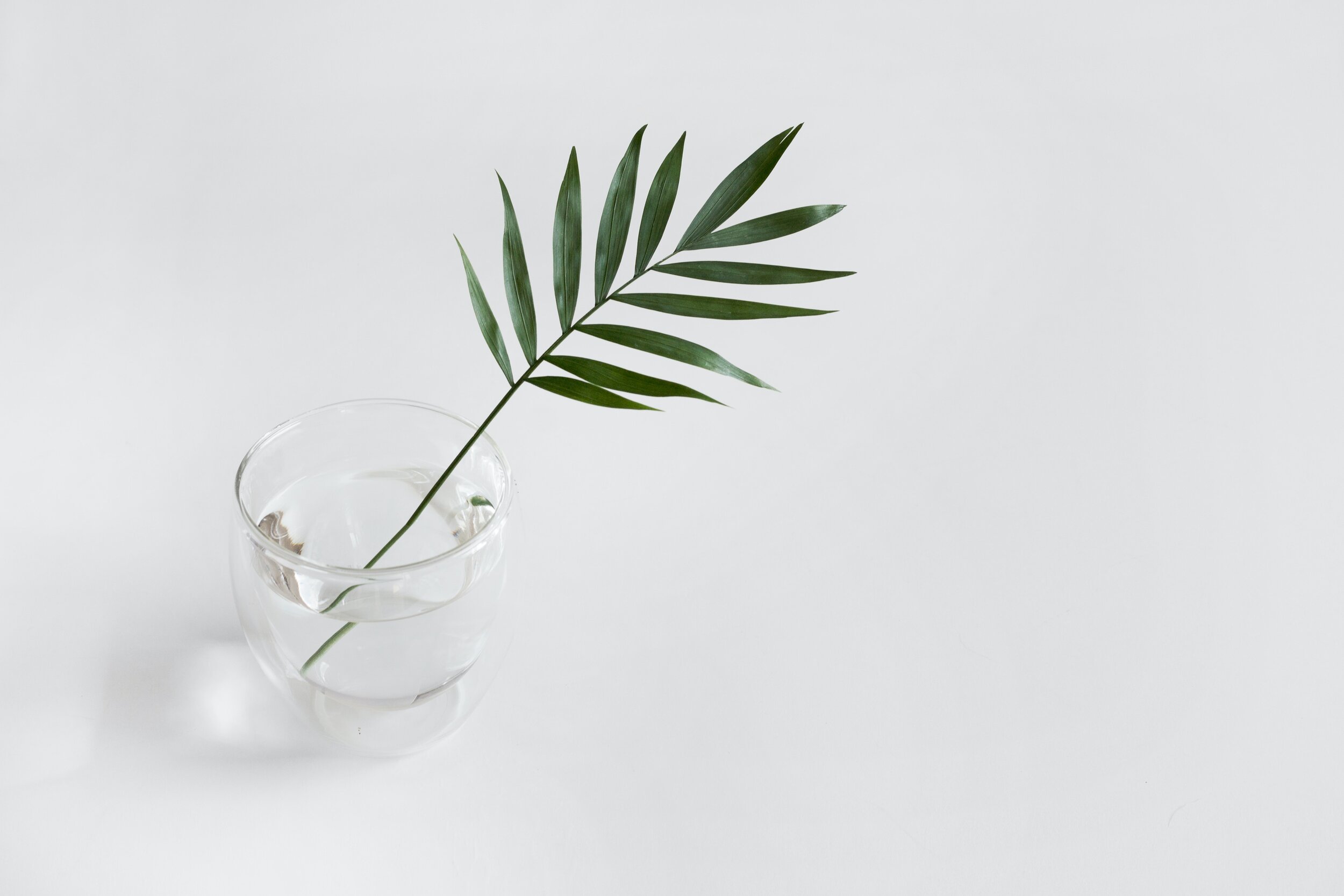Budget-Friendly Ethical Fashion with a Stylist
Do you want to be an eco- and budget-conscious consumer and shop second hand stores? But do you also get overwhelmed by overcrowded racks of vaguely smelly clothes?
You're not alone. But let's talk a little about ethical fashion first.
Related: Are you a responsible consumer?
But Okay, What is Ethical Fashion, For Real? And Why Is It So Damned Expensive?
Not gonna lie, watching The True Cost documentary on Netflix scared the pants/socks off of me. In short, the documentary talks about how bad fast fashion is for the environment and for society at large.
What's fast fashion? Think about Forever21 and H&M's unreasonably inexpensive steals and deals and how they frequently entice you to buy those $9 dresses and $4 tops.
I've talked a little about slow fashion, eco-friendly fashion, and ethical fashion before. But the potential problem with purchasing high-quality essential wardrobe items, and/or 100% organic pieces, and/or things made on US soil? These items are way more expensive than the average bear.
Slow Fashion
Why is slow fashion more expensive? Because slow fashion—that $200 pair of jeans that will last you 5 or more years because the stitching is good and they're timeless—can be hard to commit to, especially when a lot of us are out there to "just lose that last 5 pounds" or are worried that another cut will suddenly become popular again.
Eco-Friendly Fashion
Eco-friendly fashion can mean tons of things, but let's take organic cotton for example. Organic cotton means zero harmful pesticides were used to protect the cotton plants, which means less pollution will end up in our waterways and such. Running an organic, pesticide-free farm is a tough choice farmers have to make, because they're competing with farms that are willing to throw chemicals on their crops in order to produce more for less. This usually means a $5 t-shirt can end up costing you $20 or $30 or more.
Ethical or Socially-Responsible Fashion
Ethical fashion? This can also mean a lot of things, but I tend to associate it with socially-responsible manufacturing. This means employing workers at a fair wage with safe working environments (not crumbling buildings with near-to-zero ventilation that are prone to fires and collapses).
(On that note, if I had any criticism to share about that The True Cost documentary, I'd say that they might've come close to oversharing footage of the tragedy and carnage from these awful warehouses. However—it makes a deep and visceral impact that one can't forget—which is the point of showing blood, sweat, and tears.)
Anyway. Ethical fashion costs more because the hourly wage for the worker is higher.
Then if you combine these ideas into a trifecta of perfect fashion: high quality items that are sourced responsibly and made responsibly and will stay in your closet for years upon years—that shit adds up.
Pin for later
Ethical fashion on a budget: How to be a conscious consumer with a stylist and skip the thrift store rummaging | Hello Brio intentional living
Raise Your Hand If You Can't Afford Ethical Fashion Yet Either
In my dream world, I'd be able to hire a stylist to pick out perfect items for my minimal wardrobe that are all of the above: slow, eco-friendly, and ethical. But momma ain't got money for that yet. And when talking to friends about the documentary, most people go, "Ugh yeah that is awful, but I can't afford that stuff and I'd rather just go to Old Navy to drop $10 on a pair of dress pants."
In a day and age where every dollar you spend ends up being a vote for the type of world you want to live in, it becomes important not to support stores and brands that are feeding the chemical-ridden, cheap labor model. After seeing fellow humans suffer, and realizing the impact of your fast fashion wardrobe choices, you won't want to support it either.
Long intro finished, I promise.
Thrifting—With Assistance
What's a well-intentioned consumer with a real life budget to do? Shop second hand!
Items in thrift stores and consignment stores have already been "voted on" by the first owner. They were loved (or not loved) but now they're ready to be loved by you. Buying items second hand will not feed into the consumerism cycle because you're not paying the original companies directly—instead, you're supporting stores that are out to save quality clothes from landfills.
But if you're like me and you get mild anxiety whenever you walk into a second hand store, there are options for you.
No More Scrolling: ThredUp Goody Boxes
ThredUp in general is great because they support women emptying their closets by mailing customers large bags with pre-paid labels. We get the poly bag, fill it up with things that no longer fit into our wardrobe—physically or emotionally—and then we get paid for our stuff that still holds value.
On the other end, customers can shop the well-photographed and robust collection of items that other women sold to ThredUp. Shopping for clothes on a screen is a dream for some, especially for those who like to use search filters.
ThredUp recently started to offer a styling service, also known as Goody Boxes, where you fill out a preference questionnaire and choose the type of items you want to receive. For a $10 deposit, a stylist will work with your answers and hand-pick clothes from their inventory, and then you'll receive 10 items on your doorstep. The items are based around their pre-made themes, or you can get a custom box.
ThredUp Goody Box options
From there you have 7 days to try on the items and decide which ones you'll keep and which ones you'll mail back. The sheet included in your shipment will show you the estimated retail value and the ThredUp price. And, if you choose to keep $75 worth of clothes or more, they'll give you a $10 credit to use on future ThredUP purchases.
If you decide you don't like any of the items—which, let's face it, is possible… shopping secondhand is tough no matter how you slice it—you send all of the items back and are only out $10. And considering the cost of gas it would've taken you to drive to your favorite thrift stores, and your time, and your sanity, is totally worth it.
I tried it once and only kept 1 item. I liked about half of the tops I received, but thanks to what my mother dubbed "our linebacker shoulders", those tops didn't fit very well. It was easy to send back the unwanted clothes (use the same box, use the pre-printed return label they send you). I'll try ThredUp's Goody Box service again soon.
And We Evolve
So how cool is this—And We Evolve is the same type of thing, except the company is based out of Philadelphia!
On their site, they say: "And We Evolve is a fashion subscription box service for women who love sustainable fashion at an affordable price."
To get started, you simply fill out a style guide to talk about your favorite looks and brands, as well as your body type. Admittedly the onboarding survey isn't as pretty as some others, but it gets the job done.
And We Evolve process | Hello Brio
And We Evolve seems to be on the higher end of things when compared to ThredUP; you only get 4-6 secondhand pieces per styled box (what they called an AWE Box), and the brands seem pricier. However they do note on their site that the majority of pieces are priced at $20-$45 which is very reasonable for the brands they offer!
This service seems perfect for me, especially because I really want to be able to buy pieces from Anthropologie but when I go shopping there myself I always feel like a fraud in the dressing room, like I'm not hip enough or something.
I heard similar feedback about this service—that consistency for sizes across different brands can be difficult to control—but the intent is there. Especially because And We Evolve emphasizes they don't use an algorithm to pick out clothes for you—that you'll be dealing with a real human being who cares about the clothes you receive in your AWE Box.
The buy-in is higher than ThredUP at $20, but your styling fee gets credited back to you if you choose to keep at least some of your items. Just note that by signing up, you're committing to a monthly box (but you can cancel anytime by emailing them).
After my wedding (THIS WEEKEND) I will be trying out this service. (I also want to knock on their door and see if I can visit their Philadelphia space… so AWE, if you're reading this, I wanna hang!)
Get New Items That are Both Curated AND Ethical: Stitch Fix
Stitch Fix seems like an odd third choice because they're not a second hand store, but let me explain.
Before I went all ethical fashion crazy, I used Stitch Fix a handful of times in order to help me choose higher quality items for my wardrobe that were also not grey v-neck t-shirts (which are seemingly the only things I can buy with confidence in stores). For a minimalist with zero patience, the service is a dream: you get to be super picky about what you allow into your carefully-curated capsule wardrobe, and you don't have to go out and shop in the overly-lit and overly-perfumed stores.
In doing more research, I read this little blurb on Stitch Fix’s FAQ page:
We care about the environmental and the social impact of Stitch Fix and are proud to feature a variety of brands that you can request from your Stylist and feel good about how or where they’re made. If you mention in your Style Profile notes that you prefer sustainable clothing or clothing made in the USA, we’ll do our best to honor your request.
So when I updated my style profile, I included this blurb.
I care most about ethical and sustainable fashion. I am a minimalist so every wardrobe piece has got to fit a lot within my current wardrobe. I like to have one level of "dressed" which is between casual chic and business casual. I usually only wear black, grey, and white, but am willing to mix the right pops of color and prints so long as they go with black and grey.
I honestly have yet to order a "Fix"—there's a lot going on for me right now, and it wouldn't be a good idea for me to buy new clothes for a myriad of reasons—but my preferences paragraph is burning a hole in my mental pocket, and I can't wait to try it.
If you try Stitch Fix by clicking the button below, you’ll get $25 toward your first fix.
Have you seen The True Cost documentary? Where are you in thinking about fast fashion? What advice do you have for second-hand lovers? Let's chat in the comments below!
Cover photo by Prudence Earl

